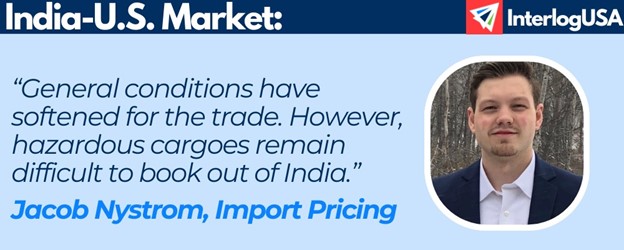Across International Shipping: News and Developments
[Labor] U.S. Longshore Negotiations: According to sources close to the talks, three issues have contributed to the lack of progress in contract negotiations: automation; wages; and pensions.
The longshore union, representing some 45,000 dockworkers across U.S. East and Gulf coast ports, has vowed to strike on Oct. 1 if a favorable proposal is not offered by maritime employers before the existing contract’s expiration date (Sep. 30).
While some cargo has diverted to the West Coast amid uncertainties, both East and Gulf coasts are handling volumes with minimal disturbance at this time. However, less than a month out from the union’s ultimatum, InterlogUSA encourages U.S. shippers to have a conversation with their transportation providers about rerouting upcoming bookings in case the labor dispute deteriorates.
For the latest chronicle on the U.S. longshore contract cycle, refer to our August issue of Interlog Insights!
[Port Update] New York Posts Record-Breaking July: The Port of New York and New Jersey recorded its busiest July ever for imports, surpassing 800,000 twenty-foot-equivalent container units over the seventh month of 2024. The performance was largely propelled by traditional “peak season” imports—back-to-school and holiday retail inventory.
The numbers seen at New York reflect a greater trend observed across the U.S. import market—an earlier start to peak season. Overall, inbound container volumes have soared at the country’s top ports since late spring. Such a trend can be explained by fears importers have expressed over end-of-year uncertainties, mainly labor unrest and the U.S. presidential election.
[Labor] India Port Strike Averted: A strike involving nearly 20,000 unionized workers across key India seaports is no longer imminent as negotiators reached an agreement on a new five-year labor contract.
IMPORT: Asia to North America (Transpacific Eastbound)
Rates: Rates to all U.S. coasts have fallen on most Asian origins. Despite earlier reports suggesting so, general rate increases (GRIs) did not take effect Sep. 1.
Space: Bookings have been easier to make from India as conditions have softened for the U.S. import market. Hazardous cargoes (hazmat) are an exception and remain challenged for space.

Capacity: Continued routings around Africa as well as port congestion in Asia have led to more instances of blank sailings.
Equipment: Some West Coast ports have reported rail congestion due to a surge in import volumes and a shortage of rail cars.
TIPS:
- Hold your logistics partners accountable for frequent updates regarding current market conditions.
IMPORT: Europe to North America (Transatlantic Westbound)
Rates: Rates have fallen since early summer. Ocean carriers did not implement GRIs Sep. 1.
Space: Space is open.
Labor: A potential longshore strike at East Coast ports in October is a primary concern for transatlantic trade.
TIPS:
- Book at least two weeks prior to the ready date.
- Stay in communication with your logistics providers on anticipated surcharges for this trade lane in September.
- Keep a pulse of ongoing labor tensions between East and Gulf coasts dockworkers and maritime employers. If feasible within your timeline, place inbound bookings in September to avoid disruptions if there is a dockworker strike in the fall.
EXPORT: North America to Asia
Harvest Season: Agriculture exports are picking up at North America’s West Coast ports as North America approaches its annual harvest season.
Rates: Rates are increasing, a healthy sign that the market is strengthening.